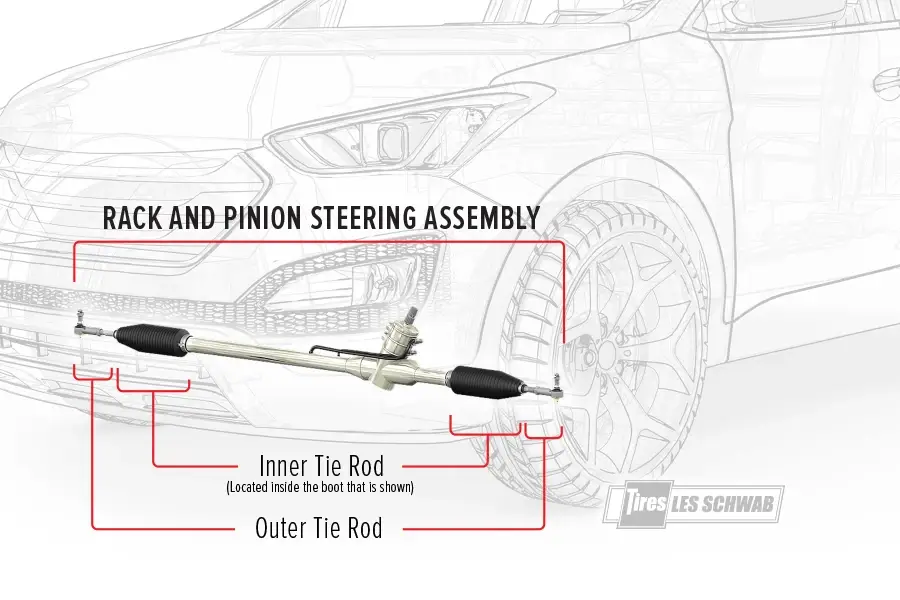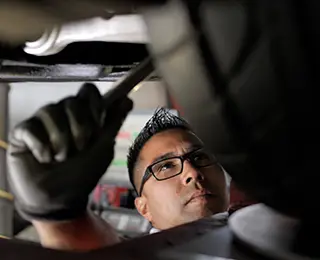What Are Tie Rods and When to Have Them Replaced
One of the most essential features for safety and control in any vehicle is the steering wheel and every part attached to it. That includes the tie rods. As those tie rods wear down and need to be replaced, it can affect your steering and the overall control of your vehicle. Let’s look at what tie rods are, what they do, how they work, and how you can spot issues before you’re left stranded.
What Are Tie Rod Ends?
Your car’s tie rods, located at each front wheel, link the steering gear with the steering knuckle. All steering systems rely on the tie rod end for proper steering function. That includes rack and pinion steering systems as well as recirculating ball types.

How Do Tie Rods Work?
Tie rods, including the inner tie rod under the rubber boot as well as the outer tie rod, are a critical component of your steering system. They connect the steering gear to the steering knuckle. Their health is directly tied to your vehicle’s alignment, tire wear, and overall handling. That’s why it’s so important to get yours visually inspected with every tire rotation or at least a couple of times a year. This can help catch issues early before other damage occurs.
How Do You Know if Your Tie Rods Are Bad?
Identifying failing tie rods early can help prevent steering failure and expensive repairs. If you notice any of these symptoms while driving, book an appointment at your local Les Schwab.
Steering Wheel Wandering
A loose steering wheel, often described as "play," can signal worn tie rods. If your steering wheel feels loose, get to Les Schwab for a free visual inspection of your tie rod ends.
Unusual and Uneven Tire Wear
Uneven wear on your front wheels could mean your vehicle is out of alignment. It could also be a loose tie rod.
Strange Sounds
Quick, sharp sounds from the front wheels while turning could be an indication of failing tie rod ends.
Alignment Issues
Tie rods that are too worn can cause your alignment to go out quickly — even weeks after a full alignment.
Vibrating Steering Wheel
A loose tie rod can cause a steering wheel to shake or vibrate.
Maintaining Your Tie Rods
Les Schwab offers free visual inspections to evaluate your steering and suspension components. That includes your tie rods. Our trained professionals can take a look and determine if your vehicle requires an alignment or the replacement of worn tie rods or other parts.
What To Expect During A Visual Inspection at Les Schwab
Our trained professionals do more than come running when you pull into our parking lot. Right away, they’ll ask all the right questions to fully understand what you need and how they can help.
When it comes to tie rods, we look for:
- Abnormal tire wear on the front wheels
- Worn or broken tie rod ends (including rust or deterioration)
- Loose tie rod ends
- Leaking tie rods
- Damaged outer tie rod covers
- Damage to other parts of the steering system
What We Look For: Key Indicators
Damaged tie rods can affect your overall steering. Worse yet, a broken tie rod can cause one of your wheels to completely turn to the right or left. Usually, this results in your vehicle quickly slowing to a permanent stop. Les Schwab checks tie rods for rust, deterioration, as well as loose parts that can impact your overall control and safety. Book an appointment today and we’ll start with your alignment as well as tire wear to pinpoint possible tie rod issues.
